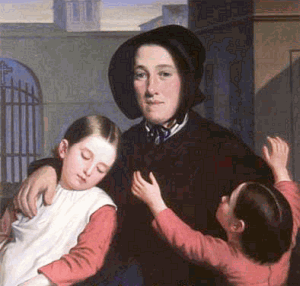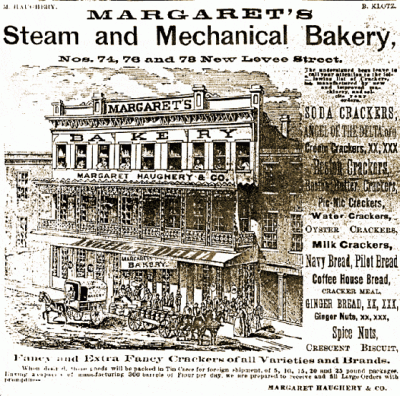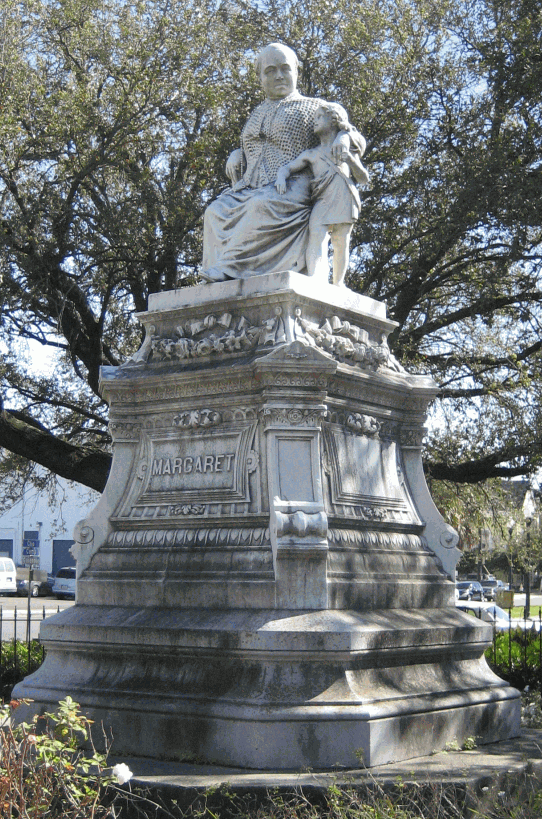|
Today in New Orleans History |
|
|
July 9


 To receive an update for each day in New Orleans history,
join our facebook page - Today in New
Orleans History.
The aircraft
was destroyed during the impact, explosion, and subsequent ground fire. A total of 153 people were killed (all 145 passengers
and crew on board and 8 on the ground). Another 4 people on the ground sustained injuries. In one of the destroyed houses,
a baby was discovered in a crib covered with debris that protected her from the flames. Six houses were destroyed; five houses
were damaged substantially. The National Transportation Safety Board determined that the probable cause
of the accident was the aircraft's encounter with a microburst-induced wind shear during the liftoff, which imposed a downdraft
and a decreasing headwind, the effects of which the pilot would have had difficulty recognizing and reacting to in time for
the aircraft's descent to be stopped before its impact with trees. Contributing to the accident was the limited capability
of then-current wind shear detection technology;[3] this, along with the similar crash of Delta Air Lines Flight 191 three
years later led to the development of the airborne wind shear detection and alert system and the mandate by the U.S. Federal
Aviation Administration have on-board windshear detection systems installed by 1993. A memorial to the
crash victims is located at Our Lady of Perpetual Help Catholic Church in Kenner. (WIKI)  To receive an update for each day in New Orleans
history, join our facebook page
- Today in New Orleans History
The current I-10 Twin Span Bridge was constructed after the original bridges were extensively damaged
by Hurricane Katrina in 2005. The first of the new spans opened to eastbound traffic on July 9, 2009. On
April 7, 2010, the second span was opened to traffic and the old twin spans were permanently closed to traffic. The approaches
to the westbound lanes were completed with a ribbon cutting ceremony on September 8, 2011 and the opening of all 6 lanes the
following morning. (WIKI)
The New Orleans Cotton Exchange, founded, February 11, 1871 ceased trading on July 9,
1964. Its constitution, adopted on January 24, 1871 stated the organization's purposes as: ...to provide
and maintain suitable rooms for a "Cotton Exchange" in the City of New Orleans; to adjust controversies between
members; to establish just and equitable principles, uniform usages, rules and regulations, and standards for classification,
which shall govern all transactions connected with the cotton trade: to acquire, preserve and disseminate information connected
therewith; to decrease the risks incident thereto; and generally to promote the interests of the trade, and increase the facilities
and the amount of the cotton business in the City of New Orleans. To further these goals, the Exchange had, in
addition to its board of directors and officers, several committees, each devoted to a particular aspect of the institution's
overall activities. These committees dealt with membership, information & statistics, trade, classification & quotations,
finance, credits, and books. By the early 1960s the Exchange was suffering from the decline in volume in trading of cotton
futures. This, coupled with changes in the regulation of trading by the federal government, led to closure of the institution
on July 9, 1964. An effort to revive the business as the New Orleans Cotton and Commodity Exchange in the mid-1970s did not
succeed. The Cotton Exchange occupied three successive buildings at the corner of Carondelet and Gravier Streets in the New
Orleans Central Business District. While the last of these structures, built in 1920, remains standing and is known as the
Cotton Exchange Building, it passed out of the hands of the Exchange in 1962. (NOPL) NOPL photo -- Tug-of-war competition from the July 9, 1944 edition of the Times-Picayune, pre-dating the 1947 establishment of NORD. In late April, 1922, the Mississippi River broke through the levee in front of the Poydras plantation
in St. Bernard Parish, flooding large portions of the parish. For the most part, the levees held the river back that year,
but there were breaks at Myrtle Grove and Ferriday as well as at Poydras. The Poydras crevasse eventually reached a width
of 1500 feet--so wide that cars had to be ferried across the break. Here we see an automobile being towed off of a temporary
ferry over break in levee at the St. Bernard Crevasse, July 9, 1922. (NOPL) A Fly Swatting Contest? Odd as it sounds, this contest was conceived by Playgrounds Commission President
Mrs. A.J. Stallings and involved 32 children, both white and African American, who, among them, exterminated 4,474,750 flies
during a three week period in June and July. The first place winners received $10, and the second and third
place winners got $5 -- pretty good cash for kids in 1912! (NOPL) In 1907 the New Orleans Playgrounds Commission operated many play areas but only one segregated playground
for African-American children -- the Thomy Lafon Playground at Magnolia and Sixth, which opened on July 9, 1907.
(NOPL) Some
Metairie residents lobbied to remove the gambling houses which came before them from their new upscale neighborhoods. C. P.
Aicklen, co-owner of Borden-Aicklen Auto Supply Company was selected as chairman of the anti-gambling Metropolitan Municipal
League which circulated a petition for incorporation as a town disassociated from Jefferson Parish government officials who
flagrantly turned a blind eye to gambling and liquor laws. The boundaries of the new town would be
Shrewsbury Road, the Illinois-Central Rail Road tracks, the Bonnabel Canal, and the Orleans Parish line. This would include
the Beverly Gardens, Metairie Inn, Victory Inn, Tranchina Night Club, the Metairie Kennel Club, and the DeLimon dog track
– these contributed the vast majority of taxes collected in the area. Incorporation as a town would allow more tax revenue
for municipal improvements, which made the prospect a double-edged sword regarding pro and anti-gambling interests. Although 7,500 people lived in the district only some 900 were registered voters whose signatures could carry
weight on the petition which required a two-thirds majority. 500 voters purportedly signed the petition for a city/town charter.
Governor Henry L. Fuqua received the petition and approved it in 1926. The new town of Metairie Ridge,
Louisiana would be headed by Aicklen as mayor, W. J. Dwyers as marshall, F. W. Bogel as clerk, and E. Howard McCaleb as city
attorney. The first ordinance adopted by Mayor Aicklen and endorsed by new Governor O. H. Simpson created the City of Metairie
on July 9, 1927. Aicklen announced that he would shut down gambling houses by working with the new municipal
courts. On November 26, 1928 the Supreme Court of Louisiana decided that the City of Metairie Ridge
had been illegally incorporated because not enough signatures were included on the petition. Jefferson Parish District Attorney
Archie T. Higgens and Judge L. Robert Rivarde along with pro-gambling factions had prevailed. In December 1928 the city was
dissolved and gambling remained active although largest operations moved to Jefferson Highway and River Road. In January 1929
taxes collected by the now defunct city, amounting to $22,00, were turned over to Jefferson Parish. #036llm
|
|
|

To receive an update for each day in New Orleans history,
join our facebook page - Today in New
Orleans History.
Analytics |

 On November 20, 1835 a young Irish-born woman, her husband, and young daughter arrived in New Orleans on
the ship Hyperion. They had left their home in Baltimore because they were advised that his health might improve in
the southern climate. He died shortly thereafter and, within months of his death, the beloved baby girl also died.
Margaret Haughery was a 23 year-old illiterate, uneducated, penniless, childless widow in a city she barely knew. Her
life had been touched by great loss before. At the age of nine her parents died of yellow fever in Baltimore.
She is often quoted as saying, 'My God! Thou hast broken every tie: Thou hast stripped me of all. Again I am all alone'
On November 20, 1835 a young Irish-born woman, her husband, and young daughter arrived in New Orleans on
the ship Hyperion. They had left their home in Baltimore because they were advised that his health might improve in
the southern climate. He died shortly thereafter and, within months of his death, the beloved baby girl also died.
Margaret Haughery was a 23 year-old illiterate, uneducated, penniless, childless widow in a city she barely knew. Her
life had been touched by great loss before. At the age of nine her parents died of yellow fever in Baltimore.
She is often quoted as saying, 'My God! Thou hast broken every tie: Thou hast stripped me of all. Again I am all alone'
 In 1880, she acquired a bakery at 70 through 78 New Levee Street which grew into one of the largest in the city. As
before, the first products went to the orphans, the rest was sold. Working in partnership with the Sisters of Charity, Margaret
fed not only orphans but the city's needy adults. She generously supported St. Theresa's Asylum, St. Elizabeth's Asylum,
St. Vincent's Infant Asylum and other similar institutions. It has been estimated that, while living, she donated about $600,000
to charitable endeavors. In addition, she personally cared for yellow fever victims, widows, and Confederate Veterans.
In 1880, she acquired a bakery at 70 through 78 New Levee Street which grew into one of the largest in the city. As
before, the first products went to the orphans, the rest was sold. Working in partnership with the Sisters of Charity, Margaret
fed not only orphans but the city's needy adults. She generously supported St. Theresa's Asylum, St. Elizabeth's Asylum,
St. Vincent's Infant Asylum and other similar institutions. It has been estimated that, while living, she donated about $600,000
to charitable endeavors. In addition, she personally cared for yellow fever victims, widows, and Confederate Veterans.  She became known, during her lifetime, as “The Bread Woman of New Orleans". A century and a quarter later,
we know her as simply "Margaret" and are reminded of her life devoted to children by the statue at Margaret Park
in front of the old orphanage. The story of the building of the statue attests to how beloved she was by so many. Almost immediately
after her death an executive committee was formed, and headed by George Horter, to raise funds for a memorial. Rich
and poor contributed and the $6000 needed to make it a reality was soon collected. Alexander Doyle, who was working
on the Robert E. Lee statue for Lee Circle, was commissioned to design Margaret's statue. His model was sent to Italy,
where the monument was carved in fine Carrara marble. In keeping with Margaret's frugal personal lifestyle, Doyle portrayed
her sitting in her favorite plain wooden chair, clothed in a simple dress and shawl. Her left arm is draped lovingly
around a young boy whose face reflects his love for her. Those who knew her, were astounded by its likeness.
She became known, during her lifetime, as “The Bread Woman of New Orleans". A century and a quarter later,
we know her as simply "Margaret" and are reminded of her life devoted to children by the statue at Margaret Park
in front of the old orphanage. The story of the building of the statue attests to how beloved she was by so many. Almost immediately
after her death an executive committee was formed, and headed by George Horter, to raise funds for a memorial. Rich
and poor contributed and the $6000 needed to make it a reality was soon collected. Alexander Doyle, who was working
on the Robert E. Lee statue for Lee Circle, was commissioned to design Margaret's statue. His model was sent to Italy,
where the monument was carved in fine Carrara marble. In keeping with Margaret's frugal personal lifestyle, Doyle portrayed
her sitting in her favorite plain wooden chair, clothed in a simple dress and shawl. Her left arm is draped lovingly
around a young boy whose face reflects his love for her. Those who knew her, were astounded by its likeness. 
